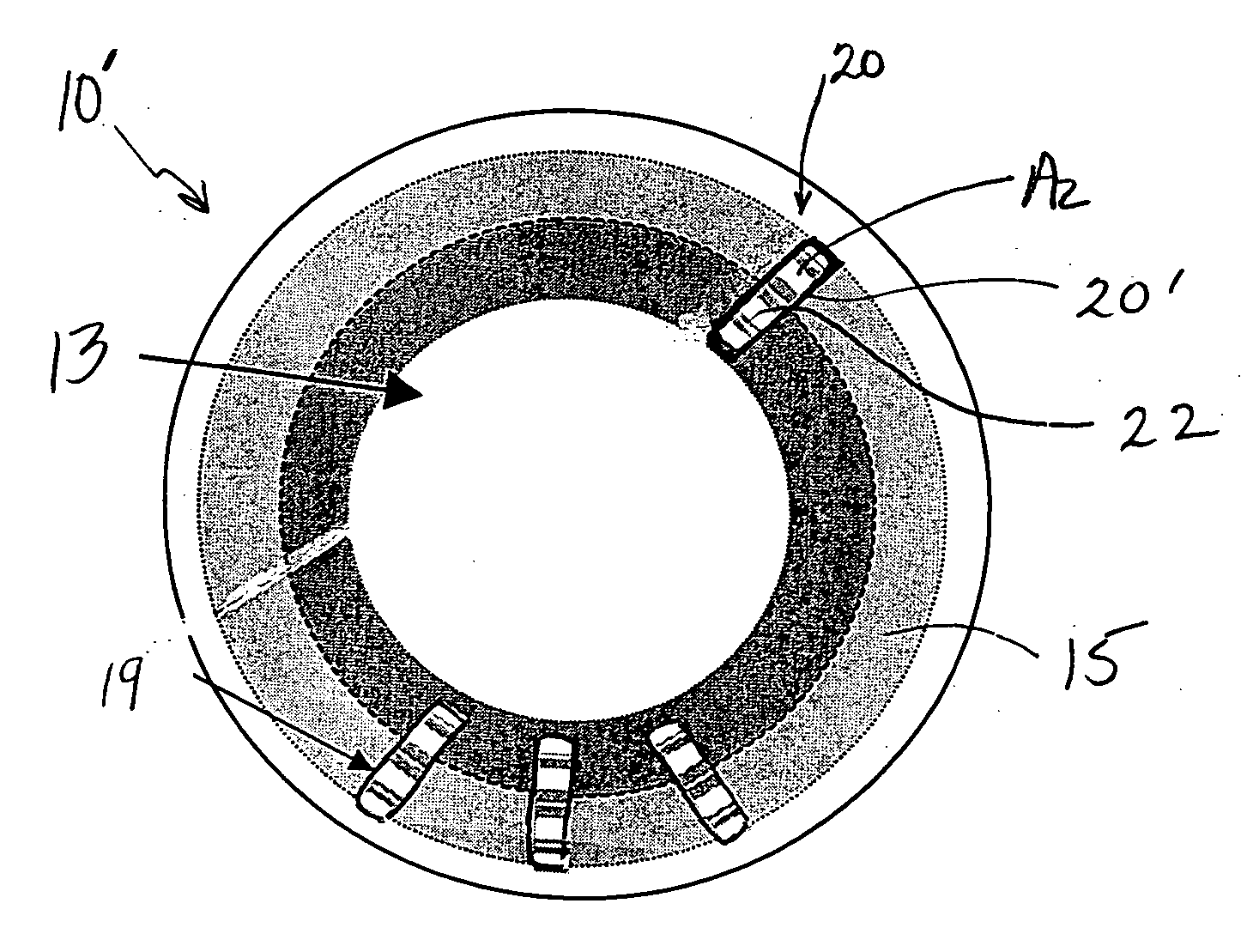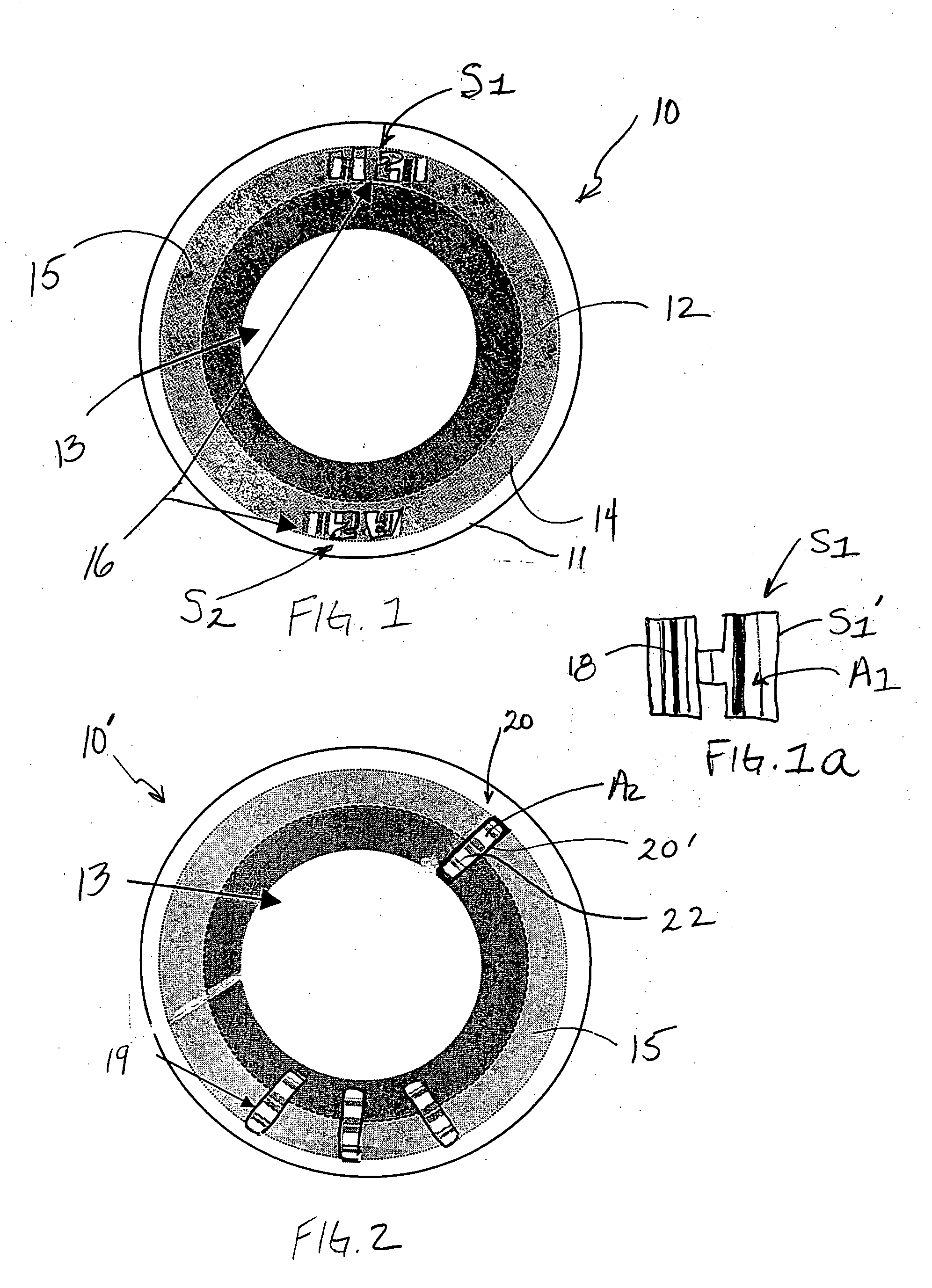Automatic identification symbology suitable for contact lens manufacturing verification
a technology of automatic identification and symbology, applied in the field of identifying characteristics of ophthalmic lenses, can solve the problems of increasing tool costs, cluttered peripheral zone of lenses, and many markings on lenses, and achieve the effect of minimizing the amount of markings
- Summary
- Abstract
- Description
- Claims
- Application Information
AI Technical Summary
Benefits of technology
Problems solved by technology
Method used
Image
Examples
Embodiment Construction
[0013] Referring now to the drawing, there is seen in FIG. 1 an exemplary contact lens 10 having an anterior surface 12 and opposing posterior surface 14 surrounded by a peripheral edge 11. At the center of the lens is optical zone 13 surrounded by peripheral zone 15. Lens 10 includes a marking 16 which may consist of one or symbols S1 and S2 located. This marking may indicate any desired property of the lens, e.g., the power of the lens, the manufacturer, an inversion indicator (to tell the wearer which surface goes against the eye), etc.
[0014] In the embodiment of FIG. 1, symbols S1 and S2 may be formed on the anterior and posterior tools that make the opposite surfaces of the contact lens as disclosed in the '826 patent to reduce the number of unique tools required to mold a series of lenses. As disclosed in the '826 patent, the symbol may comprise an alphanumeric code, for example. As seen in FIG. 1a, the letter “H” in symbol S1 has a perimeter S1′ and defining an internal area...
PUM
 Login to View More
Login to View More Abstract
Description
Claims
Application Information
 Login to View More
Login to View More - R&D
- Intellectual Property
- Life Sciences
- Materials
- Tech Scout
- Unparalleled Data Quality
- Higher Quality Content
- 60% Fewer Hallucinations
Browse by: Latest US Patents, China's latest patents, Technical Efficacy Thesaurus, Application Domain, Technology Topic, Popular Technical Reports.
© 2025 PatSnap. All rights reserved.Legal|Privacy policy|Modern Slavery Act Transparency Statement|Sitemap|About US| Contact US: help@patsnap.com


